- Home
- Harlan Ellison
The Deadly Streets
The Deadly Streets Read online
The Deadly Streets
Harlan Ellison
IN LOVING MEMORY OF
MY FATHER
LOUIS LAVERNE ELLISON
“A city sidewalk by itself is nothing. It is an abstraction. It means something only in conjunction with the buildings and other uses that border it, or border other sidewalks very near it. The same might be said of streets, in the sense that they serve other purposes besides carrying wheeled traffic in their middles. Streets and their sidewalks, the main public places of a city, are its most vital organs….
“…if a city’s streets are safe from barbarism and fear, the city is thereby tolerably safe from barbarism and fear. When people say that a city, or part of it, is dangerous or is a jungle what they mean primarily is that they do not feel safe on the sidewalks.
“But sidewalks and those who use them are not passive beneficiaries of safety or helpless victims of danger. Sidewalks, their bordering uses, and their users, are active participants in the drama of civilization versus barbarism in cities….
“Today barbarism has taken over many city streets, or people fear it has, which comes to much the same thing in the end…. And as they fear them, they use them less, which makes the streets still more unsafe.”
Jane Jacobs, THE DEATH AND LIFE OF GREAT AMERICAN CITIES
Contents
New Introduction: AVOIDING DARK PLACES
Introduction to First Edition: SOME SKETCHES OF THE DAMNED
RAT HATER
“I’LL BET YOU A DEATH”
WE TAKE CARE OF OUR DEAD
THE MAN WITH THE GOLDEN TONGUE
JOHNNY SLICE’S STOOLIE
JOY RIDE
BUY ME THAT BLADE
THE HIPPIE-SLAYER
KID KILLER
WITH A KNIFE IN HER HAND
SOB STORY (written with Henry Slesar)
LOOK ME IN THE EYE, BOY!
THE DEAD SHOT
SHIP-SHAPE PAY-OFF (written with Robert Silverberg)
MADE IN HEAVEN
STUDENTS OF THE ASSASSIN
NEW INTRODUCTION
AVOIDING DARK PLACES
In 1974 the Mystery Writers of America awarded me an Edgar Allan Poe statuette for the “best mystery story” of the year. It was a story called “The Whimper of Whipped Dogs.” You can find it in my collection, NO DOORS, NO WINDOWS. It’s a story about street violence, based on the now-legendary murder of Catherine Genovese in New York’s Kew Gardens section, 13 March 1964. It took the rapist-killer over half an hour to slaughter the woman, as she dragged herself around almost an entire city block, screaming for help. For those few of you who may not remember this case—now solidly entrenched as cultural mythology—the horrifying extra-added-attraction that separated the murder of Kitty Genovese from all the other unspeakable rape-murders that have become, sadly, a commonplace staple filler for tabloid back pages, was this:
No one helped her. She screamed long, and she screamed loud, and no one helped her. There were witnesses. Thirty-eight of them. They watched from darkened windows; some even pulled up chairs for a more comfortable view. One turned up her radio so she wouldn’t have to hear the shrieks of agony. As Kitty was being raped in an apartment vestibule—already having been knifed repeatedly, already half-dead—one of the tenants opened his apartment door, saw the necrophiliac attack…and quickly closed the door. He even knew Kitty. Thirty-five minutes after her first screams were heard, at 3:55 A.M., someone finally called the 102nd Precinct. Three minutes later a patrol car was there. The killer was gone, however; and Kitty Genovese died in the ambulance a few minutes before five o’clock; DOA Queens General Hospital.
When “The Whimper of Whipped Dogs” was first published in a magazine in June 1973, nine years after Kitty Genovese’s death (a million excuses and explanations why those 38 people had refused to help her after Kitty Genovese’s death), I received a floodtide of letters telling me things were very different in New York now. The writers of those letters assured me New Yorkers were more concerned now, that they no longer stood by as people were robbed or beaten or killed. They called me to task for disinterring a moldering corpse of ages past. They said such things could no longer happen.
Yet in early 1975, when I first wrote this introduction, as I write this, a nurse was stabbed to death in precisely the same Kew Gardens street and one of the observers who watched the murder, and did nothing, was one of the women who had sat by as Kitty Genovese was butchered and defiled.
This book speaks directly to the authors of those letters chiding me, because
Plus ça change, plus c’est la même chose.
A few weeks ago, my housekeeper, Eusona, laid a beauty on me. She reads the newspapers: I haven’t the stomach for it these days. So she has become my gazette.
The story, which she found on the back page somewhere, was a quickie. Woman parking her car in Manhattan was driven to a frenzy by a dude in a VW who pulled into the space snout-first behind her, as she was backing up. As he parked, she reached into the glove compartment of her dashboard, pulled out a revolver, jumped out of the car, stalked over to the VW, aimed the weapon through the window and shot to death the man driving, and his two female passengers.
These two stories took place in New York, but just so you don’t feel all teddibly superior to those barbarian Megalopolitans, here’s a lovely one from a large Midwestern city (which one, I cannot remember right now, but it was on the evening network news). A couple of thugs broke into the apartment of an old Czech woman. At knife-point they demanded she give them all her money. She laughed at them, telling them all she had was about three American dollars worth of Czechoslovak koruna, a currency so unstable and unacceptable that the exchange control law of 1 January 1954 prohibits its import and export. She offered them the koruna and continued laughing. Wrong move.
They spotted her gold fillings, bust out her teeth, and got away with about $1100 worth of marketable gold.
As horrifying as we may find Charlie Bronson’s actions in Death Wish, his vigilante tactics of stalking and killing muggers in New York strike a sympathetic vibration in each of us, though we hate it in ourselves, though most of us would deny we feel the same urge from time to time.
You feel it, I feel it.
Ten years ago, I was worked over pretty fair by a couple of over-six-feet heavyweights. One of them held me while the other one pounded my face into guava jelly. When the local bacon finally arrived, the guys had split. One was a deckhand on pleasure yachts, with a string of priors for mayhem that made Hurricane Carter look like Christopher Robin’s nanny. He skipped the country, so I was told. But the other one was a certified flake, an overly macho clown who had been married to a busty film starlet, had bombed out as a stockbroker, and who owed money all over Hollywood. We hauled him into the City Attorney’s office, got him cold when the Man suggested we each take a lie detector test. I rolled up my sleeve right there and said, “Let’s get it on!” The flake began to hem and haw, and his attorney fumfuh’d it was an invasion of something or other. Nonetheless, I took the polygraph test and it backed my story one hundred per cent. Attorney’s office put out a warrant for his arrest. But the cops didn’t bother looking for him.
We went to court, almost two years ago, and got a financial judgment against him for five grand, since it was obvious I wasn’t going to be able to slap the sonofabitch in jail. Even though I had witnesses to unprovoked assault, battery, criminal assault, and a host of etceteras, the cops were simply too busy busting kids with grass in their possession to keep a pair of homicidal thugs off the streets.
He can keep the five grand. Just let me have fifteen minutes alone with the muther.
I’d take along a tire iron.
Not for the beginning; I want tha
t pleasure barehanded. But after that interlude, I’d need the tire iron. I’d start with his legs. Lay him out on the floor and lean his left leg up against the wall and then just jump on the angle, right below the kneecap. Like snapping a rotted piece of cord-wood for the fireplace. Then I’d use the tire iron to break it back in the opposite direction, so bone-chips would get in the kneecap socket, so he’d walk with a limp for the rest of his barbaric life. Then I’d do his hands. Forearms with the tire iron, wrists with the tire iron, fingers one by one…
Make you uneasy? Make you sick? Makes me sick, to know I’ve got that in me somewhere. If I told you I’m a pacifist, would you believe me? Not for a second, and I wouldn’t blame you; even though it’s true. Let me make you even more uneasy; I’m no different than you.
Have you ever been beaten…or raped…or robbed…or even been dismissed cavalierly by some petty authority?
Think back. You know I’m telling the truth. We are all the same inside these skins. We all want to exact revenge. The invasion of our personal space, the brutalization, the debasement, the shame at not having been able to duke it out like Bruce Lee or one of the million short, smart movie/television stars who play the rabbit till they can take it no longer and then lash out and deck the hairy bully. Gary Cooper in Capra’s Mr. Deeds Goes to Town: at the end of the trial where the forces of greed and evil try to convince the court his millions should be taken away from him because he’s “pixilated” and the judge asks Deeds if there’s anything else, and Cooper as Deeds says, “Yes, one more thing,” and he hauls off and knocks crooked attorney Douglass Dumbrille stone cold in the courtroom. Alan Ladd in The Glass Key: having been worked over by pithecanthropoid William Bendix and his buddy, Rusty, played by Eddie Marr, fights back, sets fire to the room where’s he’s been kept prisoner, throws himself out a window and escapes, enabling him later to pound the shit out of Bendix. Jan-Michael Vincent in Buster and Billie: his sweetheart having been raped and bludgeoned to death, finds his ex-school chums, the gang who killed her, and goes berserk, killing two of them by smashing in their heads with a pool cue and a billiard ball. And, of course, Charlie Bronson in Death Wish.
But those are only movies, you say.
Are they? Think back. You know I’m telling the truth. If your wife or sister or girl friend was ever assaulted, if your husband or brother or son was ever stomped or beaten, didn’t you wish you had that fifteen minutes alone with the nameless, faceless motherfuckers who did the deed? Didn’t you fantasize it in your mind, some ghastly weapon in your hand that would prevent their getting at you as you crippled them? If you say you never held such a thought…you are either a liar or nobler than any other member of the human race.
Because the unspoken terror that lives with all of us in big cities these days is a constant. It runs in our bloodstream, it tingles in our skin, it aches in our bones. It’s better for us here in Los Angeles than for you in Detroit or Pittsburgh or Washington, D.C., or New York. But not much.
And so, in that unseamed existence beyond regional or ethnic or religious differentiations, we are all the same. All come to that place where the fear we’ve been taught is so omnipresent that it can be ignored until its intensity reaches panic level. Background noise, ever present static, the ticking of the clock in the darkened bedroom, the hum of generators underfoot, the clattering of the crickets. Always with us. Always there. Unnoticed, unheard, unknown…always there.
Until the moment comes when we become aware of it because it assumes corporeal reality. Like this:
On a trip to New York, I found myself at nine o’clock at night—having worked all day on the galleys of one of my books soon to go to press—descending in a semi-empty elevator at 919 Third Avenue. Bone-tired, leaning up against the wall of the elevator car, attaché case hanging from one hand, almost phased-out. Semi-empty. There was the one other passenger. A very large, very nasty-looking young man in a long and dirty topcoat.
In elevators, unless one is garrulous, one stares at the numbers lighting one after another, or pretends to be deep in thought; one never looks at the other passengers, unless one is a cut-up. I am garrulous, I am a cut-up; but not on this occasion. I was too exhausted. I merely leaned against that wall and waited for the long descent to end.
Everything that happened next, happened in a matter of seconds.
Without looking at him, but nonetheless seeing him clearly out of the corner of my eye, I perceived my companion’s hand reaching down into his topcoat pocket for something weighty. Don’t ask me how I knew, don’t even suggest I could have been dead wrong: I’ll admit I may have been way off-base, but in my gut I knew I was right: he was reaching for a knife. Some nice, long, heavy gravity knife or shake, like the ones I used to see uptown around 101st and First Avenue. His hand was deep in the pocket when, without moving or looking at him, speaking to the floor where my eyes were directed, I said, in a deep and gravelly voice, “If that hand comes out of that pocket with anything on the end of it but fingers, I’m going to kick your brains all over this elevator, motherfucker.”
He paused. Hand deep in pocket.
And then, very slowly, very smoothly, he brought his hand out with the fingers spread, palm forward showing he held nothing. He moved finally and carefully, deeper into his corner, and he watched me.
When we got to the first floor, he was out of the car quickly, was signing the guard’s register at the front door before I was even out of the elevator myself, and as I crossed the lobby of 919 Third Avenue, he was out the door and gone.
Yes, I may have been wrong. He may have been just a young guy working late in one of the upper offices. Maybe. But the noise level of fear had mounted too high to be ignored. It had assumed corporeal reality. And he was quickly gone.
I know if I hadn’t spoken up, just psychopathic enough in my tone and phrasing, that he would have braced me with a knife. I learned the next day, from my then-publisher, Norman Goldfind, that there had been a dozen or so knifings, robberies, muggings, and even a rape in that building over the past two years. And a man had his throat slashed in a toilet in that building just a few months ago. I knew. As you know.
So don’t judge your humble author too quickly. Don’t cluck your tongue and denigrate me for the insensate violence that exists just below the civilized veneer. I am a survival type, an animal that knows. One gets that way in cities like New York.
I learned it a long time ago, when I was gathering material for WEB OF THE CITY (republished recently in an Ace Books edition) and for this book. So the Mystery Writers of America gave me an award for a “mystery” story that is no more a mystery than any other example of mimetic fiction. “The Whimper of Whipped Dogs” is a fantasy that explains reality in a way reality cannot explain itself.
In the same way, the stories in this book hold up that mirror to the real world, turning it slightly, so you can see what goes on around you from a new angle.
Eleven of the stories were written for this book back in the Fifties, when such things as kid gangs existed in the streets of New York. They still exist, but they’re very very different now. In the Fifties, the juvies waged war against each other, and “civilians” were pretty much exempt from the slaughter, unless a random pedestrian happened to walk into the path of a zip gun slug. Today, the gangs rob and kill and spend their time helping to raise the national crime statistics by 17% every month.
Those eleven stories now become history.
There are five others I’ve added to what comprised the first edition of this book. Several of them are up-to-date exercises in street terror. They are history in the making.
But all of them, even though mere fictions, professional lies told to amuse or titillate you, bear within their plotted little boundaries the seeds of what has become the tone of the cities: fear. That unwavering threnody we hear in the night, the hum of people with aerosol cans of mace in their purses, Dobermans on leashes, Fox Locks on their doors, terror in their hearts.
Sixteen stories of v
iolent kids, murderous adults, psychos with no sane reason to kill, streetwise thugs who make their livings preying on the weak and the unwary.
And if you should ask me, “Why tell these terrible stories? Why scare us with such fables?” Why, then I answer: because it is better to know, to see the face of fear, so you can ready yourself. Because living in ignorance is no longer blissful. It’s suicidal.
The deadly streets are the jungles of barbarism Jane Jacobs speaks of, and if you wish to survive in those streets, you must arm yourselves with awareness. Perhaps these stories are only cautionary tales. When they first appeared they were curiosities. It’s just barely possible they are now tools for staying alive.
HARLAN ELLISON
Los Angeles
INTRODUCTION TO THE FIRST EDITION
SOME SKETCHES OF THE DAMNED
Ever dig a fifteen-year-old boy—his face fresh out of the candy-pimples stage—ripping another kid’s belly open with a switchblade, slicing the other kid’s face to stringers using a raw potato studded with razor-blades?
Or a sixteen-year-old girl, just beginning to fill out like a woman, battering another chick to death across the breasts with a foot-and-a-half length of tire chain?
Ever see a war party of twenty studs, all screaming as though they were battling for the Cause, come roaring out of an alley and plow into an unwary group of kids?
And the war that follows…ever see anything like that?
Not if you live in Plymouth, Massachusetts or Cuyahoga Falls, Ohio or Cadiz, Kentucky you haven’t. And you probably never will. Pray to your God you never will! You think it’s rough when your kid has a couple of beers, or stays out all night getting loaded on cheap grass, or gives you the lip? Gentle reader, you’ve got it made. Your kid is a paragon of the virtues. And you know why?

 Repent, Harlequin! Said the Ticktockman
Repent, Harlequin! Said the Ticktockman Broken Glass
Broken Glass Other Glass Teat
Other Glass Teat Memos From Purgatory
Memos From Purgatory I Have No Mouth and I Must Scream
I Have No Mouth and I Must Scream The Deadly Streets
The Deadly Streets The Glass Teat
The Glass Teat Paingod and Other Delusions
Paingod and Other Delusions No Doors No Windows
No Doors No Windows Strange Wine
Strange Wine Harlan Ellison's Watching
Harlan Ellison's Watching Over the Edge/An Edge in My Voice
Over the Edge/An Edge in My Voice Troublemakers: Stories by Harlan Ellison
Troublemakers: Stories by Harlan Ellison Gentleman Junkie and Other Stories of the Hung-Up Generation
Gentleman Junkie and Other Stories of the Hung-Up Generation The Kyben Stories
The Kyben Stories From the Land of Fear
From the Land of Fear The Top of the Volcano: The Award-Winning Stories of Harlan Ellison
The Top of the Volcano: The Award-Winning Stories of Harlan Ellison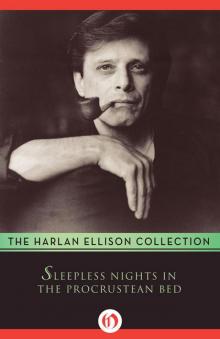 Sleepless Nights in the Procrustean Bed
Sleepless Nights in the Procrustean Bed Ellison Wonderland
Ellison Wonderland Children of the Streets
Children of the Streets Can & Can'tankerous
Can & Can'tankerous Love Ain't Nothing but Sex Misspelled
Love Ain't Nothing but Sex Misspelled Stalking the Nightmare
Stalking the Nightmare Approaching Oblivion
Approaching Oblivion Deathbird Stories
Deathbird Stories Partners in Wonder
Partners in Wonder Web of the City
Web of the City Spider Kiss
Spider Kiss A Boy and His Dog
A Boy and His Dog Shatterday
Shatterday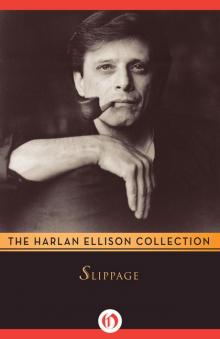 Slippage: Previously Uncollected, Precariously Poised Stories
Slippage: Previously Uncollected, Precariously Poised Stories Repent, Harlequin! Said the Ticktockman
Repent, Harlequin! Said the Ticktockman Come to Me Not in Winter's White
Come to Me Not in Winter's White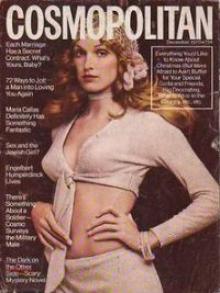 The Song the Zombie Sang
The Song the Zombie Sang The Other Glass Teat
The Other Glass Teat Doomsman - the Theif of Thoth
Doomsman - the Theif of Thoth The City on the Edge of Forever
The City on the Edge of Forever I See a Man Sitting on a Chair, and the Chair Is Biting His Leg
I See a Man Sitting on a Chair, and the Chair Is Biting His Leg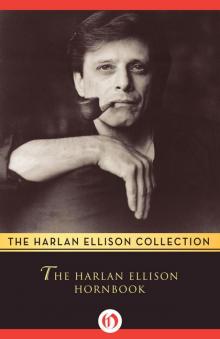 The Harlan Ellison Hornbook
The Harlan Ellison Hornbook Pulling A Train
Pulling A Train The Glass Teat - essays of opinion on the subject of television
The Glass Teat - essays of opinion on the subject of television An Edge in My Voice
An Edge in My Voice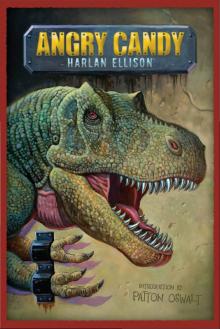 Angry Candy
Angry Candy Troublemakers
Troublemakers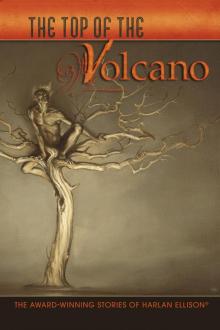 The Top of the Volcano
The Top of the Volcano Over the Edge
Over the Edge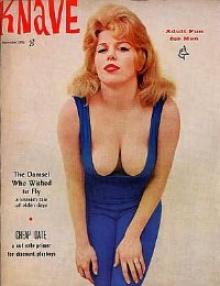 Survivor #1
Survivor #1 Slippage
Slippage